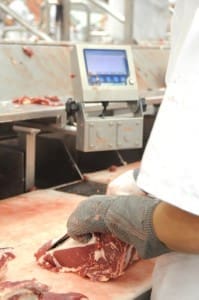 THE eastern states weekly kill bounced back to near record levels last week, as processors played catch-up over the time lost the previous week due to the Queen’s birthday holiday.
THE eastern states weekly kill bounced back to near record levels last week, as processors played catch-up over the time lost the previous week due to the Queen’s birthday holiday.
The National Livestock Reporting Service logged a five-states tally of 170,955 head for the seven days ended Saturday – just 600 short of the all-time record set three weeks earlier, as the wall of slaughter cattle being pushed to market continues.
With winter now more than half over, producers show no confidence in the seasonal outlook for spring as the El Nino forecast persists, electing to offload as many cattle as possible.
Compounding the sell-down process is the onset of the first blast of real winter weather, which has impacted pasture quality in those areas prone to frost.
While Queensland’s kill last week was large, by conventional standards, it is the persistently high seasonal kills in NSW and Victoria which continue to surprise slaughter market observers.
NSW last week, at 40,678 head, was +20pc on the previous holiday shortened week, but still 12pc higher than this time last year. Similarly, Victoria last week killed 31,412 head, up 18pc on the week previous, but a massive 36pc higher than this time a year ago.
By contrast, Queensland’s kill at 85,934 head was still large, but not out of context with kills normally seen at this time of year. It was 12pc up on the shorted Queen’s Birthday week, but only 5pc up on year-ago levels.
Both South Australia (8151 head last week) and Tasmania (4780 head) were up 1-3pc on this time a year ago.
With a 20c to 30c/kg difference in price between Queensland grids and prices further south at present, the flow of northern cattle heading south for processing is becoming increasingly common.
One of the highlights currently for exports is very strong US manufacturing beef demand, as discussed in detail in another story this morning. The only handbrake on that could be the performance of the Australian dollar, which shot to seven-month highs against the US$ this afternoon, at one point reaching US94.4c, up about a cent on yesterday.
The main drivers appear to be better financial news out of China, and a consequent surge in iron ore stocks this afternoon, as the confidence took hold.
Major Queensland processors spoken to yesterday say the flow of cattle out of all parts of the state shows no signs of abating yet, with many sites holding heavy bookings through to the end of July and into August. Another large processor said his company sites were now heavily committed into September.
Colder weather is also contributing to that, as is the consistent high kill of grainfed cattle, as many Queensland and northern NSW feedlots continue to operate and high levels of occupancy. One large end-user told Beef Central today they had 100,000 cattle on feed in custom yards across southern Queensland and central and northern NSW, both due to profitability reasons, as well as taking some insurance against access problems for better quality slaughter cattle later in the year.
There is also some talk around that the momentum that’s been seen in forward space bookings this year in Queensland has perhaps made the supply situation appear a littler worse than it really is.
“This business about booking cattle way ahead that we’ve seen so much of this year has probably stimulated others to pick up the phone to their livestock buyer, who would not normally do so,” one contact said.
“More typically, they’d have those same cattle put away on oats somewhere, and would only start picking up the phone to find a home for them two or three weeks before turnoff. But many of those calls have already been made this year, because people are afraid of missing out in the rush to kill stock, and get better positioned for the forecast dry spring,” he said.
“It’s perhaps making the supply of cattle look bigger than it is.”
The prospect of double bookings for the same cattle at two or more abattoirs has also been discussed, which if widespread, is also likely to be making the situation look worse than it is.
Saleyards numbers rose a little last week, with Queensland numbers up about 2000 head to 14,500 for the seven days to Friday; NSW, up 5000 head to 23,500 head; and Victoria little changed at 11,000 head.
Grid prices unchanged
There’s been no discernable movement in southeast Queensland grid prices offered by major processors over the past seven days. In fact, so settled are the current direct consignment pricing signals across the state this week that all 78 categories listed by NLRS in its weekly northern and southern Qld over-the-hooks report issued this afternoon, carry the letters NC (no change) beside them.
SEQ processor sell prices obtained this morning indicated grassfed four-tooth Jap ox at 320c-325/kg, 330-335c for milk and two-tooth, best cow 290c/kg. Grassfed MSA steer for slaughter ex-SEQ has held up relatively strongly, worth 375c/kg in one quote seen this morning; that’s about 10-15c/kg ahead of non-MSA yearling.
- The EYCI closed today at 333.5c/kg, up 1.75c from Friday.
